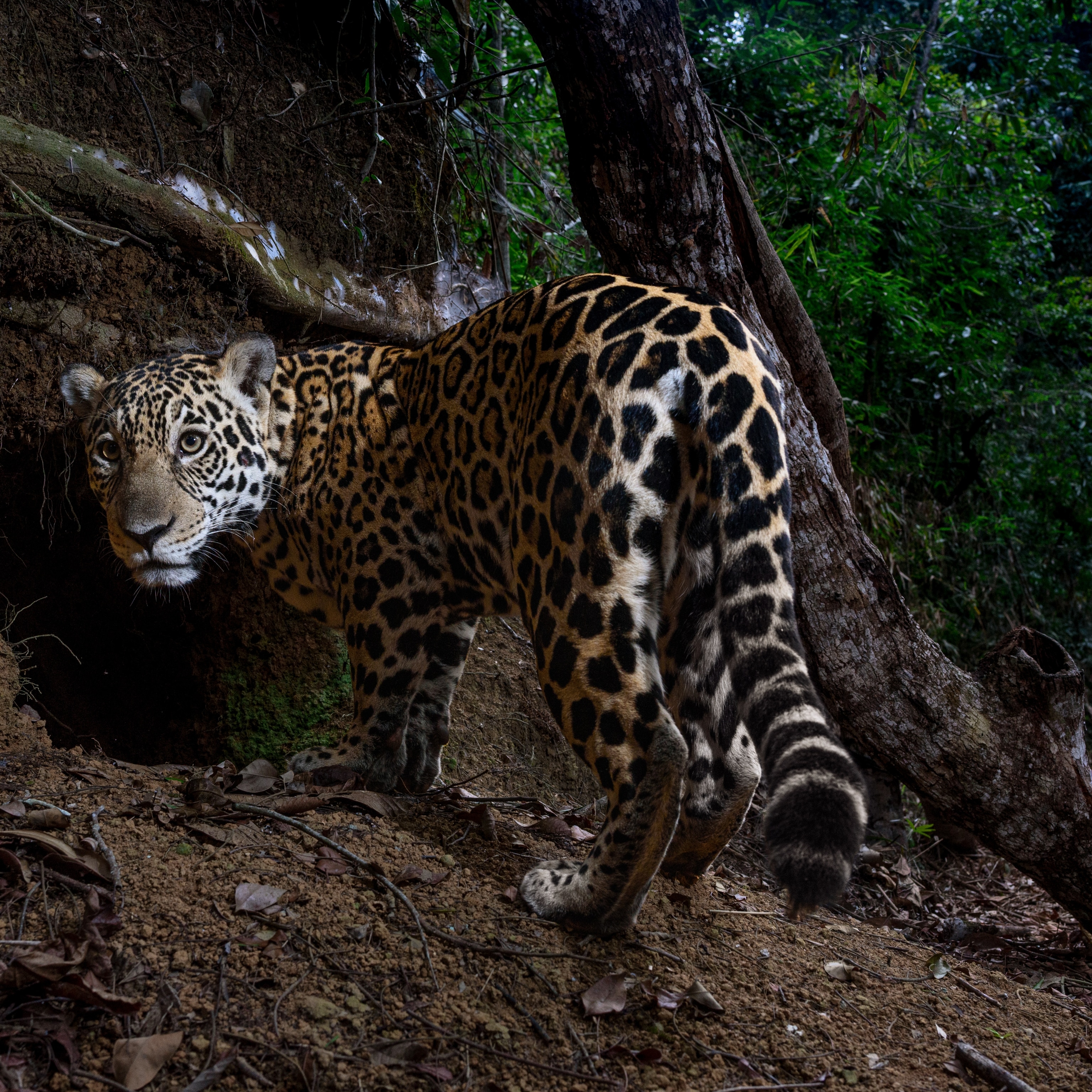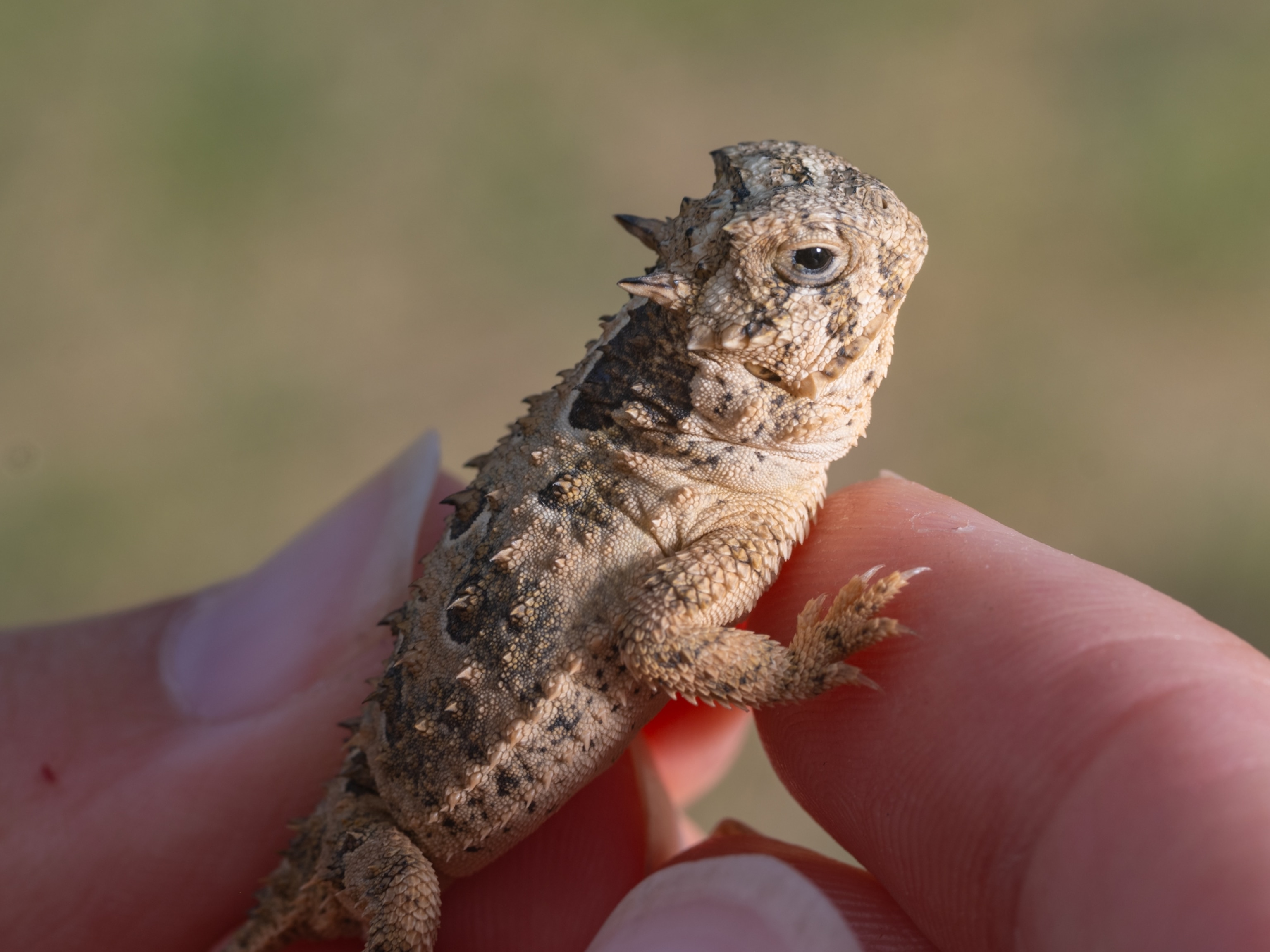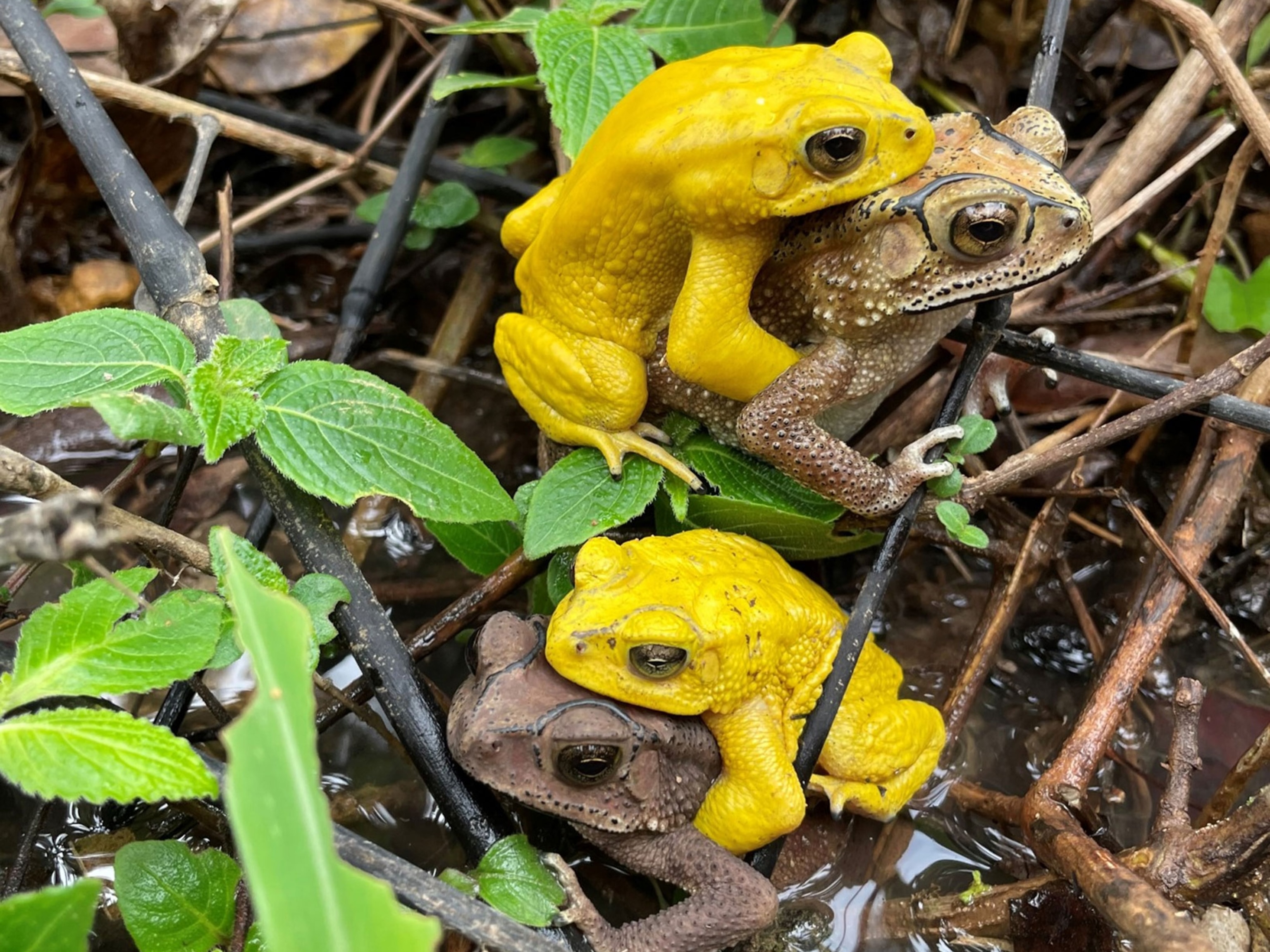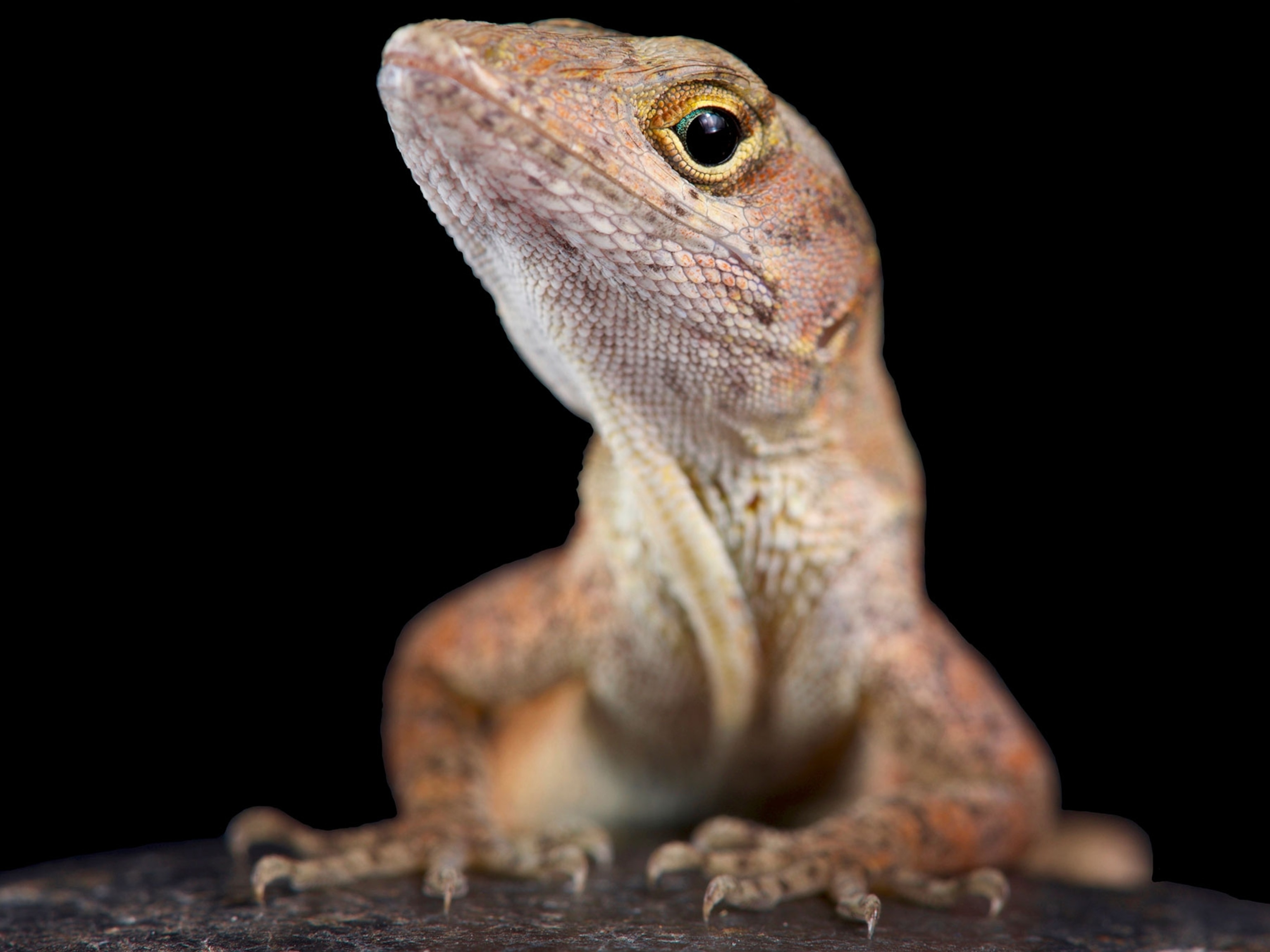
Spectacular New Species Found in "Lost World"
Expedition explores Australian rain forest for first time.
Exploration of a "lost world" on a remote Australian peninsula has yielded the discovery of three new species, including a leaf-tailed gecko with spindly legs and unusually big eyes.
In March, a team of scientists and filmmakers joined the ranks of the few human visitors to the misty rain forest atop the Melville Range, a small mountain range on Cape Melville, part of northeastern Australia's Cape York Peninsula (map).
Tropical biologist Conrad Hoskin, an expert in frog and reptiles at Australia's James Cook University, has long been interested in the area: "I've explored a lot of spots, and Cape Melville always stood out as that place," he said.
That's because satellite imagery has shown that an isolated rain forest flourishes on top of those rugged peaks, which have been cut off for millennia and that could very well harbor new, unique species that live nowhere else. (Also see "Pictures: Surprising Creatures Found Deep off Australia.")
Luckily, Harvard University researcher and National Geographic photographer Tim Laman—who led the Cape York Biodiversity Expedition— became intrigued by Hoskins descriptions of Cape Melville, and teamed up with Hoskin for this expedition, which was funded by the National Geographic Expeditions Council. (See more pictures of the expedition.)
The team set out to study the rain forest and its inhabitants, which have been largely overlooked by science: The roughly 9-mile-long (15-kilometer-long) range is almost impassable, surrounded by a fortress of car- and house-size chunks of granite that have eroded in place after being thrust up through the earth millions of years ago.
So, with no hope of climbing through this "mother of all boulder fields," the team—including Hoskin, Laman, and a National Geographic film crew—came up with another plan: landing a helicopter on top of the mountain.
What followed was what Hoskin calls a "crazy adventure."
Frogs and Skinks
On a first attempt, the helicopter dropped the team off near the rain forest on a huge, flat boulder that they'd located using Google Earth. Trying to climb down, the team soon discovered that the boulder was far taller than expected, leaving them stranded on top of the huge rock, said Laman.
"Fortunately, we told the helicopter not to go home yet, but to come back and check on us in an hour," he said.
When help arrived, the team found a better spot to unload their gear and explore the mountain.
During their first day, the team bushwhacked through the dim, boulder-strewn forest of hoop pines and foxtail palms, and before long, a new species of skink—a type of reptile—came running and jumping across the mossy boulders. The species was later named the Cape Melville shade skink, Saproscincus saltus, which is described this week in Zootaxa.
Longer-limbed than its brethren, this golden-brown skink lives only on the rain forest plateau, scurrying along the rocks in search of insects.
After a day of observing the skinks, the team climbed out of the rain forest onto the exposed boulder fields and found another surprise: the blotched boulder frog, Cophixalus petrophilus, described this week in a separate study in the journal Zootaxa. (See more rain forest pictures.)
This brown-spotted, yellow amphibian has a clever adaptation for life among the big rocks: During the dry season, it stays in shaded areas deep at the base of the boulders, where conditions are cool and moist, and during the wet summer-the time when the team visited—it emerges on rocks to feed and breed.
The newfound frog is also well adapted to life in the boulder fields: For one, it has large eyes, likely so it can better pick up light among the dim rocks.
Female frogs also lay their eggs in wet cracks in the rock, where the male guards the developing eggs.
What's odd, though, is that in the absence of water, the tadpole develops within the egg and a fully formed frog hatches out. (See pictures of another frog with unusual reproductive habits: one that gives birth through its mouth.)
"Buzzing With Excitement"
As the team hiked back through the rain forest at night, glowing from the day's finds, Hoskin suddenly spotted the reflection of two eyes on a tree.
"I ran up through the rocks and this beautiful, strange-looking gecko was sitting on the tree looking at me. I was utterly blown away by the gecko and remember holding it in disbelief.
"Then I carried it down to show the others and we were all buzzing in excitement. It was immediately obvious to everyone that it was something very cool."
Before the expedition, the team had talked about the possibility of an undiscovered leaf-tailed gecko living at Cape Melville, but the mountain range's limited size made finding such a relatively large animal unlikely.
Leaf-tailed geckos, generally about 8 inches (20 centimeters) long, are particularly interesting to science because its members are primitive species that are relics from an earlier time. (See a picture of a satanic leaf-tailed gecko.)
The new species, dubbed the Cape Melville leaf-tailed gecko (Saltuarius eximius), is "spectacular," said Hoskin, who published a paper on the species October 1 in Zootaxa.
That's because it's much different from its relatives in other tropical regions of the world, namely because of its long legs—likely used to scramble around rocks—and large eyes, which helps it see in the gloomy habitat.
"In the animal world, long legs do seem to be adaptations to climbing around on boulders, and these fantastic newly described species are great demonstrations of this," Jodi Rowley, an amphibian biologist at the Australian Museum Research Institute and a National Geographic explorer who wasn't involved in the new studies, noted by email.
Rowley also agreed with the expedition team that the frog and gecko's huge eyes may help them see when crawling around deep within the boulders' dark crevices.
Though the skink was skittish, both the frog and gecko had no fear of their first human contact: "It's such a foreign experience to have a human with a head torch on pick them up," Hoskin said.
Laman, who photographed the docile reptiles, noted that the geckos are so camouflaged that you can put one on a rock and it won't move.
"Magical Little Place"
The team plans to return to Cape Melville—which Hoskin calls a "magical little place"—within months to search for more new species, including snails, spiders, and even perhaps small mammals.
"All the animals from Cape Melville are incredible just for their ability to persist for millions of years in the same area and not go extinct. It's just mind-blowing," Hoskin said.
Added Laman, "What's really exciting about this expedition is that in a place like Australia, which people think is fairly well explored, there are still places like Cape Melville where there are all these species to discover.
"There's still a big world out there to explore."
Follow Christine Dell'Amore on Twitter and Google+.







